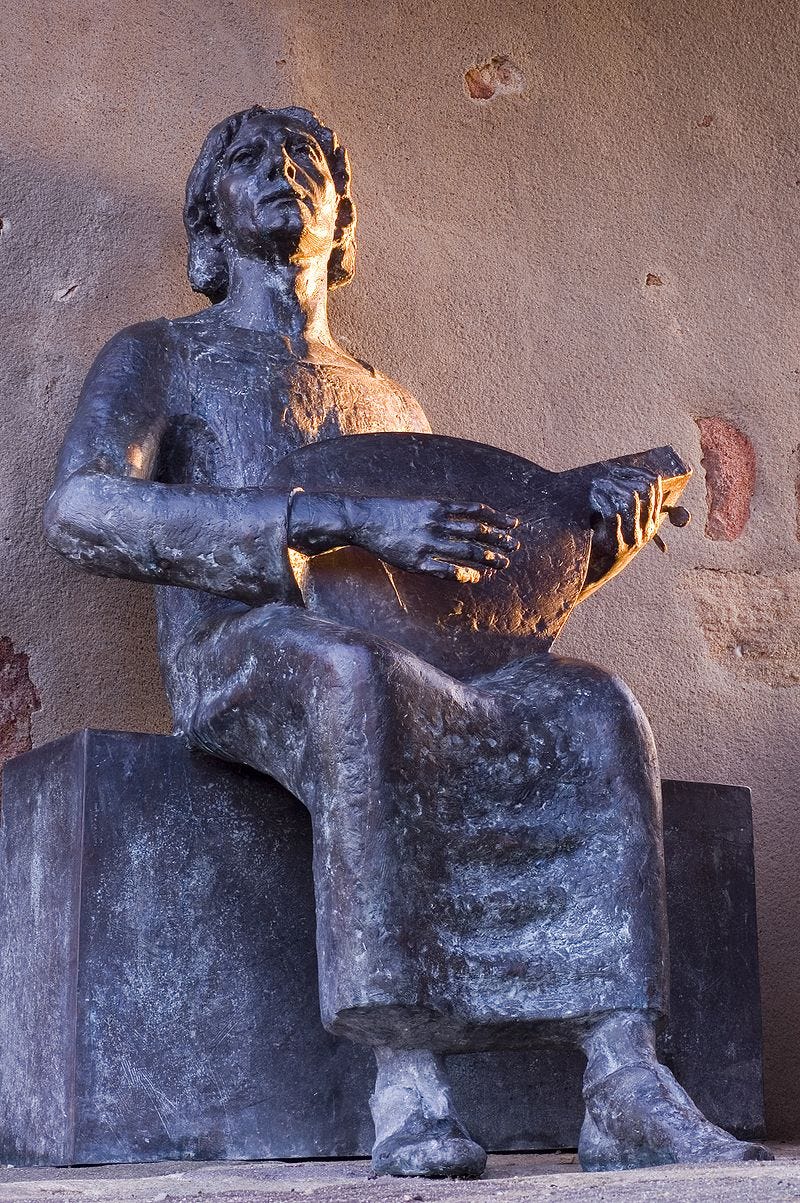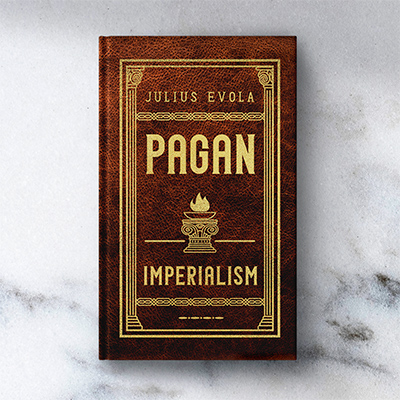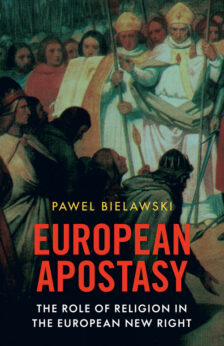Let us continue the study of the spiritual world and legacy of the German medievalist Otto Rahn, which began in a previous article for Arktos Journal, fascinated with the legend of the Grail and the study of what Catholics called the Cathar Heresy, which is essentially the ancient spirituality of the French south called Provence. In this article we will talk about the specifics of Cathar spirituality — in particular, about the significance of the Middle High German word Minne, meaning ‘love’, ‘remembrance’ or ‘loving remembrance’.
In Crusade Against the Grail (1934), Otto Rahn tells us the following about Minne:
Between Alpine glaciers and the sun-baked Pyrenees, from the vineyards of the Loire Valley to the paradisal terraced gardens of the Côte d’Azur and the Côte Vermeille, a brilliant civilization developed at the beginning of our millennium, genteel and filled with spirit, where poetry and the Minne (the ideal love, sublime love) were law. It is said that these laws, the laws of the Minne (las leys d’amors) were given to the first troubadour by a hawk that sat on a branch of a golden oak tree…
The troubadours called the Minnedienst or “devotion to love” (an homage rendered to grace and beauty) domnei (from domina = lady). Domnei provoked in the servant of the Minne (domnejaire) the joy d’amor: desire, energy, and impetuousness that led the poet to create the Minne.
This explanation generally coincides with the idea of troubadours and Provencal culture with its sublime poetry, which is well-established in modern medieval studies and cultural studies. Minnesang appears with songs about love for an unattainable beautiful lady, to whom the troubadour swears eternal fidelity, and at the same time does not covet her body, but claims to enter her heart and soul forever. At the same time, in the next work, Lucifer’s Court (1937), Rahn gives a detailed explanation of the esoteric meaning of Minne:
Cathars constituted a Gleyiza d’amors — a church of Minne (Minnekirche), and the ritual in which a troubadour swore fidelity to his lady was called, in German, the Consolament-Tröstung, the same name as the well-known ritual (Erhöhung) in which a heretical believer, or Credens, was ordained a Perfectus. In the same way, a singing and minstreling Chevalier Errant, or wandering knight, could aspire to become a Chevalier Parfait, or a perfect knight; either bitterly or gently, a Pregaire (the seeker) could become a Trobador (the one who found). The level of Chevalier Errant was the same as that of a heretical believer, and a Chevalier Parfait was equal to a heretical Perfectus. All these Latin designations were introduced by the Inquisitors, who took down the confessions of the heretics in that language. Regarding Table Ronde, or Round Table, whose miracles were exalted in most of the literary works of the Middle Ages, it has the perfect form: a circle, the symbol of community of the Perfecti and the Chevaliers Errants. The Arthurian and Grail legends must be treated as the culmination of the exalted, poetical world of the Cathars.
Thus, the German medievalist argues that the so-called Cathar heresy was a special spiritual world, significantly different from the Christian Middle Ages. Cathar chivalry in Rahn’s vision appears as a circle of initiates into the esoteric mysteries, which is symbolically reflected in the language. The transformation of Credens into Perfectus by appropriate initiation opened up new existential possibilities for the initiate, but also imposed special requirements on him. In the language of the poets, this symbolic transition is reflected in the songs of the troubadours, in which the esotericism of Provence was encoded in a romantic motif. Rahn reveals this idea further:
Anyone who reads the verses of the early Provencal Minnesingers must admit that a troubadour never called his lady by name — rather he sang the praises of the “blonde lady”, or the “lady with the beautiful face”, or the “light of the world”. These idealized ladies were nothing other than the symbolic embodiment of the church of the Minne. For example, when troubadours celebrated their “blonde lady from Toulouse” or their “lady from Carcassonne”, it meant nothing other than the Cathar community in Toulouse or Carcassonne. When, through the threat of the stake, Rome’s Inquisitors finally imposed the cult of the Blessed Virgin Mary and, through force, the custom of the Rosary, the troubadours dutifully addressed their verses to Maria. Secretly, however, they were referring to their church of the Minne. This is revealed quite clearly in the documents of the Inquisition: The Domina, or “lady”, of the Minnesingers was a “goddess” whose divine wisdom was praised in song. She was not a human being. It was initially the upper (north of Rome) Italian Minnesingers known as Fedeli d’Amore (greatly influenced by the Provencal Minnesingers) who, with fervent praise, pledged their loyalty to the Madonna Intelligenzia: Lady Wisdom.
The worship of ‘Lady Wisdom’ under the guise of the Holy Virgin, which Otto Rahn emphasizes, is an interesting sign of the times. In medieval Europe, especially during the Crusades, the open profession of non-Christian spirituality was life-threatening, which was well understood by people of that time. Due to this, the cult of Minne could exist only in a hidden form — esoteric, outwardly little different from Christian chivalry. Plunging into the hidden content of this mysterious faith, the German medievalist comes to another interpretation of the word Minne itself:
The word for the ceremony of Consolamentum contains the word Manisola in the language of the Albigensians. In the festival of the consoling Mani, the word Mani has the same root as the German word Minne — the cognate Gothic word Munni, which is what we call “memories”. The Minne was never absolute love! It meant a “memory of love”. In addition, in Sanskrit, the written language of ancient India, it has the same meaning and designates a legendary stone that allegedly illuminates the world and drives out the night of terror. It is perhaps a well-known fact that many seekers of this stone, who usually see it as a stone table that provides food and drink, regard it as the archetype of the image of the Grail… Our word Minne does not mean “love”, but “remembrance” and “commemoration”! Because my ancestors were thinkers and romantics and poets, I myself want to be a poet of the Minne. I am seeking. I would like to be a Trobador — a finder!
Discussing that, Rahn goes beyond the boundaries of time, cultural and historical formations. It is clear that the Albigensian faith is dead — crushed, destroyed, defamed by jealous Catholics. At the same time, its esoteric interpretation, undertaken by the German medievalist, allows us to stretch a connecting thread between the past and the present, and feel the spirit of that tragic era hidden in the works of the troubadours. In this regard, Rahn notes:
It is true that the way of thinking of that long-ago age may be appropriate for us. Without reservation, we can affirm its “sincere desire for the expression of beauty in life and for tasteful education in accordance with a joyful artistic existence and with its ideal of the internal nobility of mankind”. Provencal chivalry did not have anything to do with the infamous feudal system! Paris and Rome were white with hate and looked with envy upon the Provencal world of the Minne.
Thus, for Rahn, the world of Minne combines ethical and aesthetic perfection — both a ‘sincere desire for beauty in life’ and an ‘ideal of nobility’. Moreover, we are talking about ‘inner nobility’, which can be allegorically understood not only as a kind of ethical code, but also as a certain transcendent dimension characteristic of a special type of individual, whose model for Rahn was the initiated Cathar knight — Perfectus. Another interpretation of Minne, to which Otto Rahn comes, is connected with the deep esotericism of the Cathar faith — ‘Minne as loyalty’. He notes the following:
Peire Vidal, who was the son of a Toulouse furrier as well as a knight and troubadour, calls his paladin Loyalty. As result, loyalty is conditioned by a law that can be both external and internal. As such, the troubadours were subordinate to the law of the Minne. Its highest clause declared that amor has nothing to do with carnal love. All troubadours, however, were so-called Chantres d’amor, “singers of love”. We find an easy way out of this dilemma if we use the centuries-old German translation for this: Minnesinger. Provencal amor is the courtly love of Germany. Originally, this courtly love had nothing to do with physical love, because as Walther von der Vogelweide very probably knew, “neither man nor woman” has “soul not body” without spiritual strength, and what fortifies the spirit is loyalty. That is also Wolfram von Eschenbach’s opinion: True love is true loyalty!

Wolfram von Eschenbach statue in Abenberg
In the context of Otto Rahn’s work, Dante’s famous words, ‘all my thoughts always speak to me of love, yet have between themselves such difference’, take on a completely different meaning from the usual one. Let’s recall René Guénon’s reasoning from the work The Esoterism of Dante (1925) about the secondary nature of forms in everything related to spirituality. Talking about Minne, what Rahn calls ‘true loyalty’ is essentially esoteric in the genuine meaning, beyond religions and cults. Minne as a ‘memory of love’ connects high souls — aspiring upwards. Rahn comes to the conclusion that ‘memory in love’ and ‘loyalty’ are the keys to eternity itself. He illustrates this idea in Lucifer’s Court with the legend of the rose garden of King Laurin, which he recalls in the Alpine highlands of the Swiss Bolzano:
I will never forget this evening. I stood in front of my hut and watched the sun set. The bells of a forest chapel on another slope tolled, announcing the passing of the day. All of it was part of my dreamy life near that wonderful Rose Garden Peak, whose rock glowed red like the costliest roses. Sometimes it flamed, as if a fire burned within it and as if the fog that enveloped the peak was a smoke trail. As I watched, I thought about the old songs, which recall a miraculous event on the mountain: the dwarf king Laurin is said to have once cultivated an exquisite rose garden here, during a time when mankind was better. Wonderful aromas floated on the breeze from myriad flower cups, and thousands of birds were jubilant for the Creator’s reward by day and by night. It happened, however, that wicked people kidnapped the dwarf king and took him to their city, where they forced him to perform as their juggler and jester. Soon thereafter, Laurin was able to free himself from his chains and secretly return home to his paradisal realm. To stop an unworthy intruder from again gaining entrance to his garden, Laurin spanned the path leading to it with a silk thread. A man who has strong arms may not have the strength to tear apart a spiderweb-thin thread. A man may be rich, yet he never can buy the view of Rose Garden Peak. And a man may be well-read, but there is no book that can describe Laurin’s wonderland. I reflected on this in front of my meadow hut.
Overhead, the night had finally come and the moon had followed, leaving its rays on the rock. The day had gone, and in my mind a beautiful song composed by Brahms presided over the cool night that had set in like death. The mountain was no longer before me. For me, the greatest of Laurin’s wonders is the knowledge of day and night, which is also the understanding of life and death. Oh, how we should learn from him! People sigh and say they do not need to learn. It is still possible to gain admission to Laurin’s magical kingdom despite the silk thread — but only for those who are knights or children or poets!
On the ancient Tyrolean Troj de Réses, the Rose Path, which leads from the Karer Pass through the Tierser Valley to the north, a warrior from the retinue of Dietrich von Bern is said to have once ridden. He tried in vain to find an entrance to Laurin’s realm. Whenever he believed he had reached the goal, insurmountable cliffs rose up before him. Then he saw a ravine, and he descended into it. In the vicinity of a brook, he heard the breathtaking song of countless birds. He stopped and listened. He saw a woman, who was tending lambs in a sunny meadow. Would the small birds always sing, he asked her. The woman answered that she had not heard them for a long time, but now the mill could finally be found and people could now be brought back to health. The knight asked what the mill was for, and the woman responded: It was enchanted and had stood still for many years. In former times it belonged to King Laurin and was operated by dwarfs who milled flour there and gave it to the poor. They had become possessive, however, and one of them had thrown a dwarf into the water because he didn’t produce enough flour. Since then, the mill had stood still and would not move until the birds begin to sing again. The mill, deep in the ravine, was called Rose Mill because it was overgrown with rose hedges.
The knight hurried into the forest to search for the mill, and he found it. Moss ran riot on the roof, the timbered walls were blackened with age, and the wheel did not turn. The roses were so thick that anyone who did not know about it would have passed by without a glance. The knight tried in vain to open the door. The lock would not give way. Then he spotted a small window.
From the back of his horse, he looked through the panes. In the miller’s room seven dwarfs lay asleep. The knight called out and pounded on the door in vain. From there he rode back to the meadow and lay down to rest. The next morning, he clambered above the forest ravine, and there stood three rosebushes. The knight broke a rose from the first bush. An elf then called from the bush: “Bring me a rose from the good old time!”
“I would do so gladly,” said the knight, “but how do I find it?” Grumbling, the elf disappeared. The knight walked to the second bush. He broke off a flower. Again, an elf appeared, asked the same question, complained, and disappeared. When the knight broke a rose from the third bush, a third elf asked: “Why do you pound on our door?”
The knight answered: “I want to enter King Laurin’s rose garden because I am searching for the May Bride!”
“Only a child or a singer may enter the rose garden. If you can recite a beautiful song, the way is open to you.”
The knight responded: “That I can do!”
“So come with me”, the elf said, before picking hedge roses and descending into the ravine. The knight followed him. When they reached the mill, the door sprang open by itself. The dwarfs were still sleeping. The elf stroked them with the roses and called: “Wake up, you sleepy-heads; the young roses bloom!”
The dwarfs rose and rubbed their eyes and the mill began to grind.
Then the elf directed the knight into the cellar of the mill. From there a passageway led into the mountain, ending in the brightest light. With delighted eyes, the knight looked at King Laurin’s garden of Paradise with multicolored flower beds, laughing groves, and parading roses. He also saw the silk thread, which spanned everything.
“Now begin your song”, said the elf.
The knight sang of Minne and May, and the rose Paradise opened itself unto him forever. The knight had entered eternity.

The metaphor of the ‘entrance to eternity’, used by Rahn in his recap of the legend of the Rose Garden, symbolically reflects the aspiration to perfection. His knight, who aspires to pass into the garden of immortality, must be ‘a child’ or ‘a singer’. A child is a symbol of innocence and spiritual purity (at the same time, let’s not forget that in alchemy, a crowned child is the designation of the Philosopher’s Stone). The singer, whom the elf from the legend equates to a child, represents the troubadour Perfectus, a genuine knight who sings of ‘loving remembrance’. Singing about Minne and May (we should remember the traditional symbolism of the May Bride — for example, May is the month dedicated to Flora in Ancient Rome, which represented the rebirth of nature, flowers and fertility), the knight entered the Rose Garden — he gained eternal immortality and eternal happiness. Contemplating Minne, Rahn also recalls Walther von der Vogelweide, who ‘being a Tyrolean, certainly knew the legend of the Rose Garden’. He was singing about Minne:
Minne is neither man nor wife.
It has no soul or body;
Your essence remains to be invented.
It cannot be compared
And yet you can never reach
God’s grace without it.
Into false hearts it never goes,
It only belongs to the noble ones.
The deep meritocracy of the Church of Minne, which Otto Rahn writes about, is characteristic of the Cathar faith and one of its key differences from the dominant egalitarianism of Christianity. ‘Minne belongs only to the noble ones’, says Walther von der Vogelweide; ‘noble’ means Perfecti, or Chevalier Parfait. This lofty ideal, which is a striving for absolute perfection, can be a guiding star of personal ethics even in our times, and in this sense Otto Rahn’s work, his interpretation of the Cathar faith, is extremely relevant.
At the same time, it is difficult to keep striving for perfection without a guiding light and an example. The Morning Star led Otto Rahn and his soulmates, the Cathar Perfecti, on their way up to Heavens. We’ll talk about this next time.







